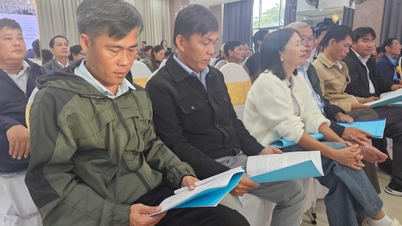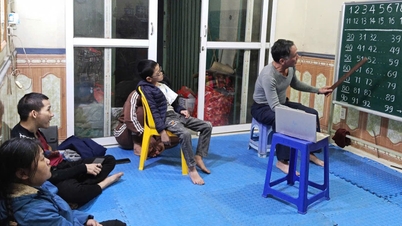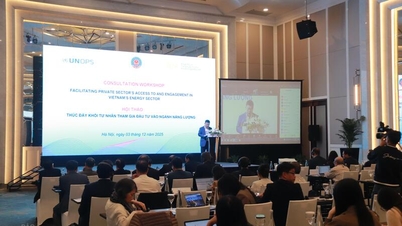
Illustration photo
According to the Ministry of Home Affairs , in the past, the work of evaluating cadres and civil servants was still weak, formalistic, and did not accurately reflect the actual capacity according to the results and products performed according to the job positions of cadres and civil servants.
In many cases, the evaluation is still emotional, deferential, lenient or prejudiced. In reality, the majority of cadres and civil servants are evaluated as "fulfilling their tasks well" or better, leading to an equalization between those who work productively, with quality, and effectively and those who work poorly, and is not a tool to screen out those who do not meet job requirements.
The reason is that there is no effective, transparent, and objective assessment tool by quantifying the progress, quantity, and quality of product results according to the job positions of cadres, civil servants, and public employees.
The Law on Cadres and Civil Servants 2025 (Articles 25 to 27) stipulates the principles, authority, content, and methods of assessing and classifying the quality of civil servants based on regular, continuous, multi-dimensional, and quantitative monitoring and evaluation using specific criteria.
These criteria are linked to progress, quantity, and quality of results and products according to job positions; use assessment results to implement rewards, additional income regimes, bonuses, or consider placement in lower job positions or dismissal to screen out those who do not meet job requirements from the system. The Law also assigns the Government to specify this content in detail.
On that basis, the Ministry of Home Affairs has drafted a new Decree to replace Decree 90/2020/ND-CP and Decree 48/2023/ND-CP on assessment and classification of cadres, civil servants and public employees.
Overcoming the situation of 'emotional, random scoring at the end of the year'
The content and evaluation criteria include a general criteria group of 30 points and a criteria group on task performance results of 70 points. The collective evaluation results will be an important basis for evaluating the responsibility of the leader, rewarding or handling responsibility.
Another notable point is that the draft clearly distinguishes the activities of "Monitoring and Evaluation" and "Quality Classification".
Specifically, monitoring and evaluating civil servants must be carried out regularly and continuously on a periodic basis (monthly, quarterly). Meanwhile, the classification of civil servant quality is a comprehensive activity and is carried out once at the end of the year based on previously recorded monitoring and evaluation results.
This approach aims to ensure logic, sequence, and transparency in the civil servant evaluation process; overcome the situation of "emotional, sudden scoring at the end of the year", in accordance with evaluation requirements, ensuring objectivity, regularity, continuity, and multi-dimensionality.
Apply clear KPIs and scoring
The draft Decree also adds a method for monitoring and evaluating civil servants periodically (monthly, quarterly), with the application of KPI (performance evaluation index) and transparent scoring formula.
The evaluation method will be based on two main principles: Quantifying work products: Each product/work is converted to a "standard product/work unit" according to criteria of volume, complexity, progress, technique, etc. to create a basis for uniform evaluation, avoiding individualization; Evaluation according to three criteria axes: Quantity, quality, progress.
Monitoring and evaluation scores are calculated according to the formula: (Total score of general criteria x 30%) + (Total score of KPI x 70%), ensuring recognition of general qualitative criteria (30%); while emphasizing actual task performance results (70%).
Based on total score, civil servants are classified into 4 levels:
The results of monitoring, evaluating and classifying civil servants will be used as a direct basis to determine additional income and bonuses; consider arranging and transferring suitable job positions; and screen and remove from the system those who do not meet job requirements.
With this new approach, each cadre and civil servant will be "measured" by their capacity, products and actual efficiency, creating motivation to strive, encouraging innovation and creativity - in line with the spirit of administrative reform that the Government is resolutely implementing.
Thu Giang
Source: https://baochinhphu.vn/bo-noi-vu-ap-dung-kpi-trong-danh-gia-cong-chuc-tinh-diem-ra-sao-102251016105312391.htm






![[Photo] Parade to celebrate the 50th anniversary of Laos' National Day](/_next/image?url=https%3A%2F%2Fvphoto.vietnam.vn%2Fthumb%2F1200x675%2Fvietnam%2Fresource%2FIMAGE%2F2025%2F12%2F02%2F1764691918289_ndo_br_0-jpg.webp&w=3840&q=75)
![[Photo] Worshiping the Tuyet Son statue - a nearly 400-year-old treasure at Keo Pagoda](/_next/image?url=https%3A%2F%2Fvphoto.vietnam.vn%2Fthumb%2F1200x675%2Fvietnam%2Fresource%2FIMAGE%2F2025%2F12%2F02%2F1764679323086_ndo_br_tempimageomw0hi-4884-jpg.webp&w=3840&q=75)










































































































Comment (0)